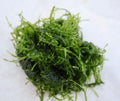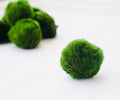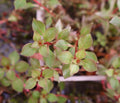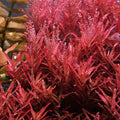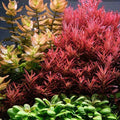The Basics of a Self-sustaining Tank
If the idea of a self-sustaining tank intrigues you, keep reading to learn how to build one and keep everything in it, including the equipment and live species, in striking equilibrium so that they may coexist without difficulty.
We have provided comprehensive instructions for building a self-sustaining tank here.
The Basics of a Self-sustaining Tank
Selection of Fish
Getting the livestock is the aquarium's next crucial component. The next stage is selecting the fish that are best for self-sufficiency after you have gathered everything needed to build up a tank. Before choosing the fish, you should keep the following in mind:
- Environmental circumstances
- The size of your fish or its potential size
- Size of your Tank
- Fish Compatibility towards other Aquatic Plants
- Aggressiveness scale
Fish Tank
A fish tank is the first item you'll need to set up your self-sustaining aquarium. In general, beginners are advised to choose a modest-sized tank, but if you want an autonomous tank, you'll need a medium- or large-sized tank. It is so that you can maintain the proper water-to-fish ratio while housing a variety of species in a large tank. The ideal tank size is between 30 and 200 gallons.
Substrate
Most of the time, the importance of substrate for fish tanks is underestimated. Gravel, soil, and sand are crucial components of an aquarium. A quality substrate will work as a medium for the rooting of aquarium plants and provide the necessary bacteria for any fish tank. The mineral-rich substrate ensures a secure filtration system when the right number of bacteria settles at the bottom.
Water
It is crucial to use treated water in a self-sustaining tank because you won't replace the water for several days. Maintain the temperature and pH level within the permitted ranges for the species you'll be putting inside. Make sure that the appropriate salinity criteria are met at the same time. You shouldn't rely on any testing kit at random when it comes to a self-sustaining tank. To keep the levels of water parameters precisely maintained, always use a high-quality water testing kit.
Aquatic Plants Life
A self-sustaining tank establishes its natural food chain, as has already been mentioned. Therefore, choosing the appropriate aquarium plants is crucial. If the tank is small, you should only select aquarium plants that don't grow excessively quickly and don't need to be trimmed often. Self-sustaining fish tanks are ideal for plants that don't need a lot of maintenance and are simple to maintain.
Hydraulic Filters
Another crucial piece of equipment for an aquarium is a good filter. It makes sure that the water is kept clean and that there is enough oxygen in the form of bubbles to maintain the health of the plants and fish. Depending on the size of your tank, you must choose the filter's appropriate size and shape. Modern markets also offer technologically sophisticated filters that warn users when a problem exists.
Lighting
Fluorescent lighting is one of the most important components of a self-sustaining aquarium. For healthy growth and development, both fish and plants need enough light. Fluorescent lighting ensures ecosystem growth by supplying the proper UV light in the tank. Plants and fish thrive regardless of the direction the light is coming from. You don't need to be concerned about your aquatic companions if the tank receives 6 hours of UV light.
Decor
Although décor items are not necessary for a self-sustaining aquarium, they do enhance its beauty and appeal. The market is full of items for aquarium decoration. Just make sure they won't rust, are pollutant-free, and are safe for aquariums. Natural shells and reef fragments make wonderful aquarium decorations as long as they are well-cleaned before being added to the tank.



